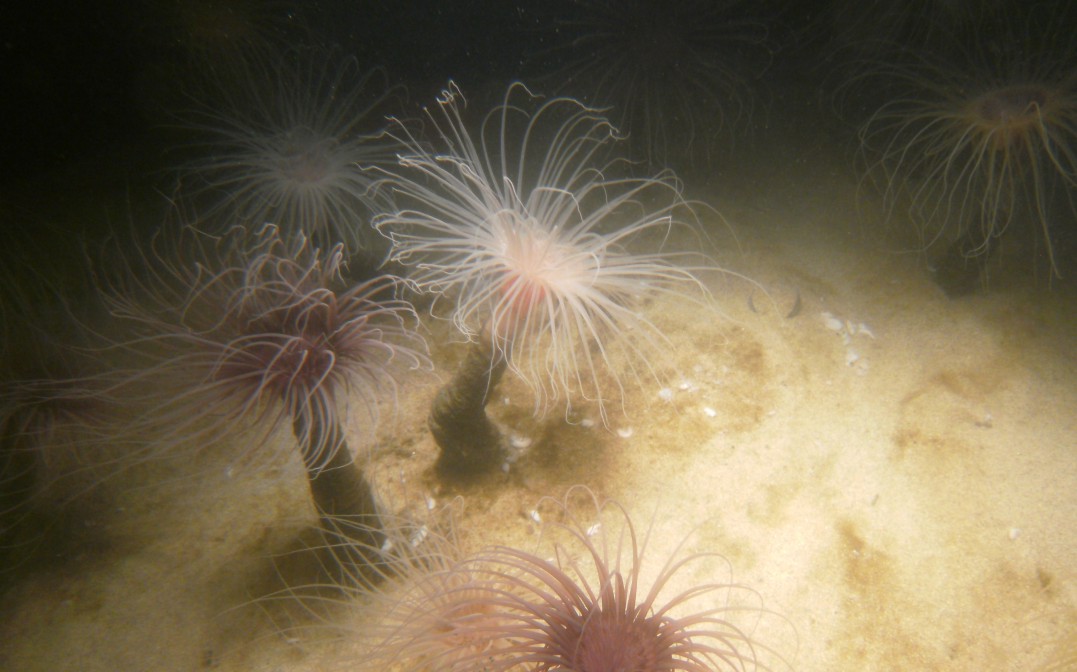Description: This anemone-like species lives in a slippery black tube that they secrete. It has two rings of slender, translucent brownish, purplish-black, orange, or light colored tentacles. The inner ring may be held over the mouth while the outer ring is extended further. Animal length to 35 cm. Tube up to about 2.5 cm diameter and may be more than a meter long.
How to Distinguish from Similar Species: This is the only member of this Subclass in our area. Other members of the subclass include black corals
Geographical Range: Southern Alaska to Isla San Martin, Baja California
Depth Range: Rarely intertidal, mostly subtidal to at least 54 m
Habitat: Very soft mud such as bays and harbors. Sometimes in sand.
Biology/Natural History: This anemone-like
cerianthid lives in a soft, black, slimy tube that may extend a meter or
farther into the sediment. The tube extends slightly above the sediment
and is made of a secretion of nematocyst-like organelles called ptychocysts.
The cerianthid quickly withdraws into the tube when disturbed, and may
leave a star-shaped track in the mud around the tube entrance with its
tentacles when it withdraws. Predators include the nudibranch Dendronotus
iris, which may be drawn into the tube and continue feeding when
the cerianthid withdraws. Dendronotus
iris attaches its eggs to the tube of the cerianthid, which appears
to be its principal prey. Feeding by the nudibranch usually does
not kill the cerianthid. The aboral
end of the cerianthid is pointed and adapted to digging. Cerianthids
differ from anemones in several ways, such as having an aboral
anal pore. Cerianthids have unusually rapidly-conducting nervous
systems for Anthozoans. Some cerianthids have fluorescent tentacles
(in some other animal phyla fluorescent pigments have been shown to help
defend against ultraviolet radiation).
| Return to: | |||
| Main Page | Alphabetic Index | Systematic Index | Glossary |
References:
Dichotomous Keys:Carlton, 2007
Kozloff, 1987, 1996
General References:
Gotshall, 1994
Harbo, 1999
Hinton, 1987 (as P. estuari)
Lamb and Hanby, 2005
Morris et al., 1980
Niesen, 1994
Niesen, 1997
Ricketts et al., 1985
Scientific Articles:
Web sites:
General Notes and Observations: Locations,
abundances, unusual behaviors:
I have not observed this species near Rosario, where bottoms are sandy
or rocky. It may be found in quieter, muddier bays.

More individuals, showing the variety of tentacle colors. Sometimes
the tentacles are banded. Photo by Dave Cowles at Monterey Bay Aquarium,
August 2010.
Authors and Editors of Page:
Dave Cowles (2010): Created original page
CSS coding for page developed by Jonathan Cowles (2007)
Rosario Invertebrates web site provided courtesy of Walla
Walla University
